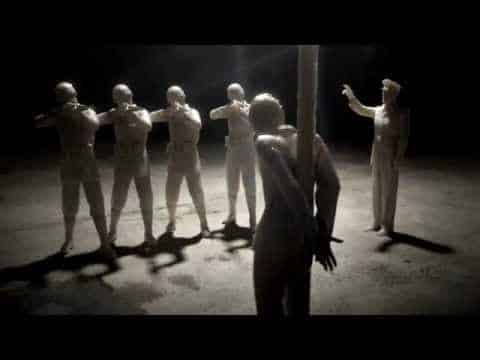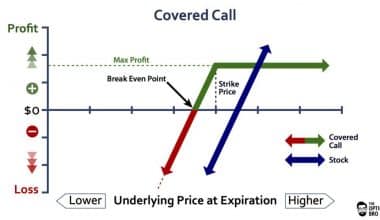Video is a potent storytelling medium that can serve as a prime testing ground for your business’ promotional campaigns, influential ideas, and experimental content efforts. The emotionally resonant combination of sound, motion, and visuals in the video can also help you foster deeper, more fulfilling relationships between your brand and its audience. Video content ideas, strategy, and many more are all we would be sharing in this article.
What Is Video Content
Any materials distributed in video format are referred to as video content. Videos of testimonials, product demonstrations, presentations, vlogs, and more can be included. As a component of their marketing plans, many businesses produce video content. Companies can strengthen customer relationships and trust by releasing video content that helps their customers get to know them better.
Video Content Marketing
Brands can increase their online visibility by creating video content through video content marketing. Although it can also take the form of webinars, courses, live videos, or self-hosted videos, video is typically published on either YouTube or a social network. When used effectively, video can be a potent tool for brands to communicate their messages to a broad audience. Both B2C and B2B content strategies can use it.
The great thing about effective video content marketing is that it is getting a lot simpler to do. There is truly something for every business, even those without conventional video recording or editing skills, thanks to the variety of marketing options available.
Video Content Ideas
Here is a list of suggestions to get you filming quickly as promised.
#1. A Video Demonstrating a Product
Demonstrations of products are an excellent place to start if this is your first attempt at video marketing. Additionally, if you already have one, consider creating another from a different angle. Speak to your consumers to learn how they use your product, and then create videos based on what you learn.
#2. A 10-Second Full-Length Demo Clip
If your product has several features, showcase the most well-liked one in a brief, 10-15 second demo video (or the feature you believe deserves the most attention, if your product has more than one). These videos help increase traffic to your content by working well for pre-roll or social media advertisements.
#3. A Blog Entry was Made into a Video
Consider using an effective blog post as a blueprint for your upcoming marketing video if you have one. Get inventive and add storytelling scenes or props to the blog post’s illustrations. Building trust with your readers is made easier by connecting a real person to your blog’s already-premium content.
#4. Video Whiteboard
Whiteboard videos, also known as video scribing, are very common since they are both visually appealing and affordable to make. The only real equipment required is a camera, tripod, good lighting, and an artist.
#5. Advanced How-to Video
If your product has sophisticated functionality (as our video editor does), you can create a how-to video that goes beyond the basics of your product. Additional how-to video possibilities include highlighting specific challenges or pain areas that your solution solves, as well as how your product fits into the greater landscape of your business.
#6. Team Member Interviews
Interview a crucial team member, such as the founder, CEO, or main product development. Concentrate on a subject that would interest your audience, then introduce them to the people that run the company. You may, for instance, ask the company’s founder what motivated her to form the business or the product developer how they approach difficult design issues.
#7. A Discussion with a Potential Client or Customer
With the help of your sales staff, identify a consumer who has just purchased your goods or is about to seal a transaction. Find out whether they would be willing to participate in a couple of on-camera interviews with a member of your staff. Real customer problems are addressed in this sort of video content marketing, which encourages customers to make a purchase.
#8. Product Video Provided by Users
Obtaining user-generated content can be challenging, but it is often worth the effort. Posting a video of a client using your product and showcasing its benefits could persuade potential customers more effectively than a video created by your firm. Not to mention that it excels at brand advocacy.
#9. A Video-Thank You
You may already be thanking your consumers via social media or email, but what about video? Engaging with clients after a sale can increase recurring business and word-of-mouth recommendations for your company.
Once you’ve created your video, it’s simple to embed it or include a link to it in an already-written thank-you note. Or why not create a video specifically for a repeat customer who has been devoted to your brand or a customer who frequently makes large purchases?
#10. A Video Testimonial From a Client
Utilize the influence of social proof by getting a standout client to record a quick testimonial. This gives your video material a personalized touch that, *spoiler alert*, may draw in new viewers.
Video Content Strategy
#1. Clearly State the Topic of the Video
It goes without saying that you should give viewers enough information to make an informed decision about whether or not to watch your video. It makes sense that people first skim the titles before watching the video, as John Bottom claims on his blog. Aside from the title and description, however, video production is a difficult format to quickly scan.
Attempt to write down your videos. By doing this, you can provide viewers with the content in a text format that they can skim-read before watching if they’d like. Additionally, you’ll assist search engines in indexing your video content.
#2. Make Video Conversion-Friendly.
Once you’ve persuaded viewers to watch your video, it’s time to maximize its effectiveness and concentrate on conversions. It only needs to be correctly optimized with a conversion-focused focus.
How can we achieve that?
Incorporate a prominent call to action. Online marketers who are skilled understand how crucial it is to have a clear call to action. Be concise with your goal—whether you want leads, sales, or just a conversation determines everything.
Also, you can include share buttons, a direct message from the speakers of the video, a link to your landing page at the end, and many other things.
Finally, make sure that watching your video is simple. You can observe how Berenji & Associates give a clear command to begin a free consultation and direct individuals as to what to do next by looking at the following example:
- Establish the ideal publication period. Determine the optimum moment to share your video to receive the most views in the first 48 hours by conducting an analysis. YouTube will recognize the importance of your video material to other viewers more when you gain more views.
- Provide rewards. Offer people quick rewards for watching and participating in your videos. You could offer coupons, a free white paper, a contest, or links to a free course to your video viewers.
Using social proof is a good way to increase conversions as well as establish credibility and trust with your audience. There are many efficient ways to go about it. To demonstrate how other people find your video content educational and worthwhile, for instance, you can display likes, votes, views, comments, and other metrics. Provide video testimonials or case studies from your clients, industry professionals, famous people, or close friends if you provide services or goods.
#4. Decide on Your Distribution Channels
You must choose the best distribution methods and target the proper audience if you want to increase engagement. And in essence, this means that for an efficient marketing approach, you should send your movie to as many locations as you can. Consider these clever suggestions for your video content strategy:
On your website, use your video. Even if you don’t have a lot of traffic, this may persuade new visitors to view your videos and possibly enhance the functionality of your website.
Post your film to Vimeo and YouTube. the obvious starting points. Directly post links to your video on Google+, Facebook, Twitter, Linkedin, Instagram (Instagram reel), and Pinterest.
#5. Examine the Performance of Your Video
Without analytics, no online marketing effort will be successful.
If you produce a lot of videos, you should monitor the success of your video marketing initiatives and take active steps to enhance them. You can monitor video performance, find your most popular videos, learn more about views, traffic sources, total watch time, and more with the help of Google Analytics and YouTube Analytics. You may also use the SE Ranking position tracking tool to check your YouTube ranks. Also, depending on the aggregate amount of views, shares, and mentions, you may gauge your overall brand awareness.
#6. Increase Your Videos’ Impact and Reach
Your video content campaign is prepared, and now you want to make the most of it. Consider the following when developing your video marketing strategy:
Engage your audience.
Try to solicit feedback from your audience and address any comments that are posted beneath the video. You’ll receive immediate notifications when someone comments on your live video if you host them. It’s your responsibility to reassure them that their opinions are valued.
What are Video Content Types?
Here are forms of video material your business can produce:
#1. Skit
You might think about creating a skit if you want to get inventive and inject humor into your marketing. Funny films can make your viewers feel good, which can help them relate to and positively perceive your business. You could utilize your skit as a commercial, for instance. The skit can provide a brief story while illustrating how two characters might interact with your company’s goods and services.
#2. Email videos
Instead of including words in an email, you can produce a video that provides the information you would include in a written message. Video emails have the potential to be more engaging than text-only emails and to stand out in the inbox of your target audience. Your consumer may easily access your video content from their email by opening the email when it is delivered to them and playing the accompanying video.
#3. Webinar
A webinar is a live, online seminar where participants can connect and learn. The presenter is typically one person, and audience members are free to ask them questions. By demonstrating products or educating participants about your business, you can use webinars as a marketing strategy. You can interact with a live audience using this type of video content, or you can record your webinar and publish it online for viewers to see and debate at a later time.
Additionally, you can create videos or use excerpts from existing ones to post on the social media pages of your business. To keep the interest of your social media followers, social media videos should be brief and fast-paced. To make social media videos that your fans will find engaging and up-to-date, try to stay on top of social media trends. Using hashtags to promote your videos across many platforms is another advantage of this kind of video.
#5. Event
You might also organize a gathering and film it. Organizing events may be a successful marketing tactic, and publishing a video of the event’s highlights can provide you with even more content. For instance, you could create a montage film for your website or publish video highlights from the event on social media. With the help of these videos, you can attract more attendees to your events by appealing to your target audience.
#6. Live Broadcast
You might also think about running a live stream, which is a live video that users can view. An occasion, a new product introduction, or a Q&A could be live-streamed. This type of content is a great way to interact with your audience because some businesses enable viewers to ask questions during live streams so that they can be answered in real-time.
#7. Meet the Team
You may be able to use this to promote the corporate culture. Try to include a few of your company’s employees in your behind-the-scenes video and provide viewers with their names and positions. Viewers may get more interested in your business as a result of this insight into it. Viewers may develop a stronger sense of kinship with your organization after they get to know the people who work there.
#8. Interview
You can also make videos that include interviews with other figures connected to your sector, such as influencers, thought leaders, and speakers. Also, you can film interviews with employees of your business. Make careful to develop a list of interview questions prior to producing an interview video. Also, you might ask your social media fans what queries they would like your guests to address. By doing this, you can interact with your clients in a way that makes them feel appreciated.
#9. Vlog
A vlog, or video blog, is a brief and informal video you can make to engage people in meaningful and informal interaction. You may either enlist one of your staff members to do a vlog showcasing what your business does or collaborate with an influencer to market your items through vlogs. An influencer or other representative using your goods or services in their daily lives may be shown in a standard vlog. This is a fantastic way to casually and entertainingly demonstrate the everyday value of your products.
#10. Tutorial
Viewers can learn how to do things from tutorial videos. Your consumers can learn from a training video you make on a subject relevant to your industry. If you work in retail, for instance, you might make a lesson video that shows viewers how to blend patterns in their clothing. Make a recipe tutorial video if you work in the food sector.
#11. Presentation
Presentation slides with narration are typically shown in video presentations. The narrator addresses the crowd while referencing the slides in the presentation as visual assistance. Information can be effectively communicated to audiences through video presentations. This kind of film, for instance, might be useful for showing your consumers how to assemble or operate a product. The audience can follow along more easily if you provide step-by-step instructions together with visual aids and audio descriptions. Because viewers can pause and fast-forward at any time, video can be a useful medium for this type of educational content.
How do I Make a Good Video Content?
You may immediately raise the caliber of your films by using these few suggestions.
#1. Make Editing Straightforward
While video editing, and experimenting with various effects can be enjoyable, don’t overdo it. In general, a straightforward, clean editing approach presents the best.
#2. Keep Off Shaky Video
Any professional video will appear to be a home movie if there is shaky footage (and it can make your viewers feel seasick, to boot). Try not to hold your camera at all if you can help it because it’s difficult to hold a camera totally steadily. Use a tripod instead, or place your camera on a solid surface.
#3. Make Use of Enough Light
Make lighting one of your main priorities when filming because it has a significant impact on the final product’s quality. Even if your video is fantastic in every other aspect, it will probably look amateurish if you don’t employ enough well-placed light.
#4. Make the Background Plain
When filming, choose your background carefully. A cluttered or distracting background is the single biggest professional turnoff. Using a background that is one solid color is a simple method to give your film a professional appearance. A bedsheet, a wall, or a sizable piece of backdrop paper are all suitable choices. To avoid casting shadows on it, make sure your subject is placed many feet away from the background.
#5. Give Crisp, Clear Audio Priority
Indeed, the caliber of your audio matters more than the caliber of your professional film. Most viewers will watch a video as long as it is otherwise entertaining and doesn’t suffer from poor HD quality or even minor graininess. But within a few seconds of a video starting to play, anyone will typically hit the “back” button due to fuzziness or indistinct audio.
What are 3 Main Parts of Content Video?
#1. Pre-Production
This is the planning and preparation stage, where concepts are discussed to get the team ready to shoot the actual video. After all, without a strategy in place, it’s hard to get quality footage! The producer, art director, copywriter, and screenwriter are just a few of the many faces on the Title Productions team that are involved in pre-production. They all collaborate to sketch concepts, create a production schedule, and in some cases, compose a script! That is a crucial step because poor planning will be obvious as soon as you start filming.
#2. Production
The focus shifts to the production phase once the pre-production team has covered all the necessary ground. The production team jumps right into the action over the course of several days or even weeks of filming by doing on-location filming, voiceovers, drone footage, b-roll footage, and even audio design. This portion of the process can be highly hectic and prone to delays because it may include the producer, director, cameraman, drone operator, sound operator, assistant, and actors on any one day. The pre-production team is under a lot of pressure to schedule and plan out each aspect as precisely as possible because the production phase frequently has a deadline.
#3. Post-Production
Post-production, which entails editing the original footage to produce a finished video that can be shared with an audience, is the last stage of video production. Once more, the director will frequently be involved in post-production, but there will also be some fresh faces, such as the creative designer, video editor, and video assistant. Together with editing, post-production involves a great deal of labor-intensive effort, including collaboration on sound and music composition, color grading, and more. The ultimate goal is to produce a finished video that is completely professional-looking.
How do I Start Creating Content?
We have outlined this procedure in detail so that you can produce your own digital content.
#1. Begin with a Concept
Every piece of content has an initial concept. We need to have some kind of starting point, whether it be a term, a topic, a prewritten headline, or an abstract notion that needs to be transformed into something solid.
#2. Research the Topic
You undoubtedly have a thorough understanding of your industry. That doesn’t imply that you already know every statistic-based information and every component of the puzzle. No matter how knowledgeable you are about your subject, you should still conduct research before writing.
#3. Choose the Course for Your Content
Is this a helpful blog post? Is it lengthy, or do you want a briefer, more concise blurb? Will there be humor in it? Do you prefer a video or infographic as a replacement? Do you want to make a video or infographic to go along with it?
#4. Write a Catchy Title
80% of readers will typically read your title, while only 20% will continue reading your post. This means that you must come up with a catchy headline that will entice readers to click through and read the entire blog content (and then share it). For a single piece, some copywriters would even come up with 20 to 30 distinct headlines before selecting the ideal one. But you need to take care of business. Instead, we advise that you seek assistance from a headline generator.
#5. Finally, Write
Employ a tale in your introduction. Make your readers want to read more by engaging them. Pose the query that you’ll utilize the remainder of your piece to address. Divide your information into sections and use the body of your blog post to respond to the query. Users of web material typically prefer skimmable content, and we try to deliver it. In addition, include a call-to-action in your conclusion to let readers know what to do after reading your post.
How do I Make a Short Video Content?
Although some marketers agree that short-form video content can last up to three minutes, short-form video content is any type of video content that is shorter than 60 seconds in length. Short-form videos are intended to be consumable, bite-sized chunks of content that viewers may simply swipe through and view multiple at once.
Limit it to 60 Seconds or Less
The best case scenario is less than 60 seconds—or even occasionally less than 15 seconds—although some movies, such as in-depth instructional or stories, might exceed the 3-minute TikTok cap. This ensures that your video is in fact bite-sized.
Useful uses for long videos
Use the lengthy videos you’ve already paid for if you have them. With a video editing program, you may quickly trim the material to fit a vertical screen and select segments from larger videos. This is a fantastic method to begin posting short-form material while you’re still polishing your plan and generating concepts.
Conclusion
High-performing videos require a lot of time and work to produce. But if you have a strategy for your video content and exercise a little imagination, you can take use of its potential to convey motivational stories and inspire viewers to watch and act.
Related Articles
- How to Make Money From YouTube Videos
- HOW TO START A YOUTUBE CHANNEL: Step by step Guide
- 8 Non-IT Remote Only Jobs You Can Start Doing Right Away
- HOW TO GET VIEWS ON YOUTUBE: BEST TIPS
- CONTENT MARKETING SERVICES: Best Services for Traffic, Rankings, & Sales
- PRODUCT MARKETING MANAGERS: What they do, Salary & Differences






